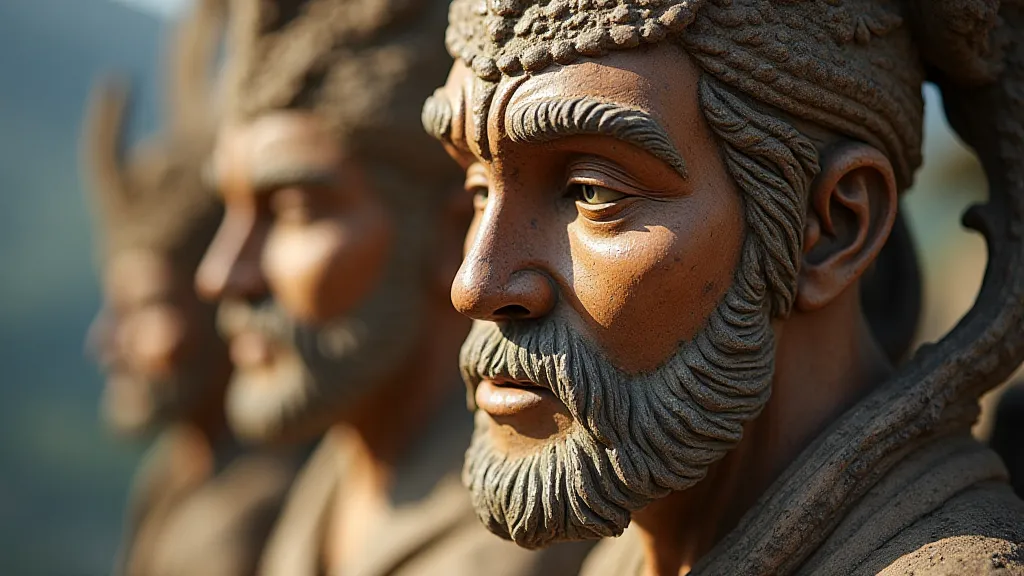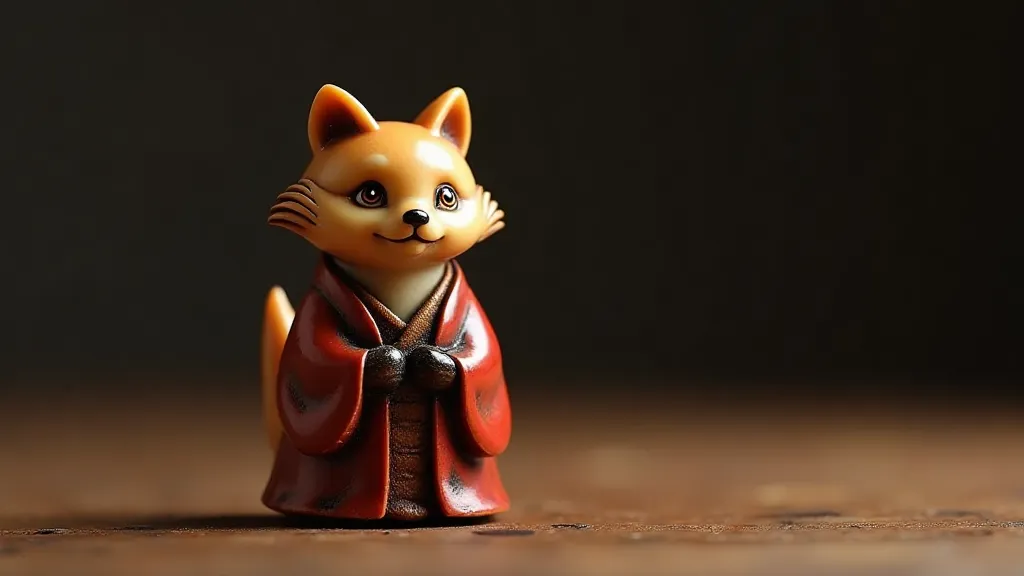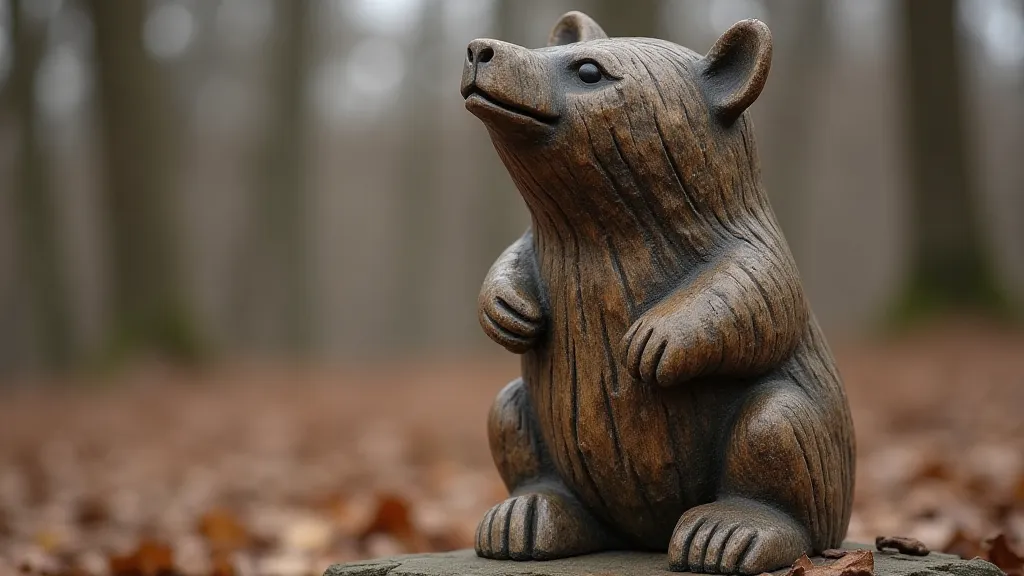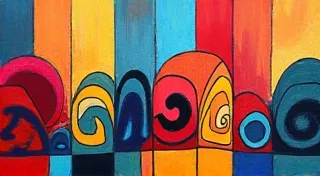The Carving as Chronicle: Embodying Community History in Wood
Wood carving. The very phrase conjures images of weathered hands, the scent of cedar and pine, and the quiet rhythm of a chisel meeting grain. But it’s more than just a craft; it's a time capsule, a visual poem etched into the heart of a tree. Across the globe, regional wood carving styles aren't just about aesthetics; they’re living, breathing records of community history, folklore, and the subtle shifts that shape human experience. These aren't just decorations; they’re stories whispered through wood.
My own fascination began, oddly enough, with my grandfather’s workshop. He wasn't a carver, but a clockmaker, surrounded by a comforting chaos of gears and springs. I'd spend hours there, absorbing the methodical precision, the palpable respect for the materials. He’s long gone now, but I still remember the way his eyes would light up when he talked about the old cabinetmaker down the street, a man whose folk art creations were the pride of the village – wooden birds, almost startlingly lifelike, each with its own peculiar personality. Those birds sparked something in me, a desire to understand the stories embedded within handcrafted objects.
The Baltic Tradition: Telling Tales of Sea and Spirit
Consider the intricate wood carvings of the Baltic region, particularly those from Latvia and Lithuania. Here, the craft isn’t just about beauty; it's deeply intertwined with pagan beliefs and a profound connection to the sea. Early carvings often depict mythological creatures – Jūrmājas Māte (Mother of the Sea), Perkūnas (god of thunder), and other spirits that were believed to influence daily life and the bounty of the waters. These weren't simply decorative elements; they were invocations, charms, and reminders of a spiritual heritage.
Later, as Christianity took hold, the pagan motifs didn't disappear entirely. Instead, they were cleverly incorporated into Christian iconography, creating a fascinating blend of old and new. Look closely at a Baltic wooden crucifix, and you might discern traces of the ancient spirits, subtly woven into the design. The craftsmanship itself speaks volumes about the skill and dedication of the artisans. The detail – the individual strands of hair on a figure’s head, the folds of a robe, the delicate carvings on a fishing boat – is simply astonishing. These carvings weren't made for wealthy patrons; they were often created by farmers and fishermen, made to be cherished within the family and community.

The Black Forest’s Guardian Figures: A Chronicle of Prosperity
Moving to the Black Forest region of Germany, we find a different, but equally compelling, tradition: the creation of ‘Bollenhalder’ figures. These aren't purely decorative; they’re imbued with symbolism representing the values and aspirations of the community. Historically, these figures – often depicting men with axes or women with baskets – were placed above the doorways of homes and barns, serving as guardians against evil spirits and symbols of prosperity.
What’s remarkable about these carvings is their evolution. Initially, they were relatively simple, reflecting a more austere lifestyle. As the region prospered during the 18th and 19th centuries, the carvings became increasingly elaborate, incorporating detailed depictions of clothing, tools, and even scenes from rural life. A particular house's carving would often reflect the family’s profession – a farmer might have a carving depicting a harvest scene, while a craftsman might show his tools. These weren’t mere decorations; they were visual resumes, declarations of identity and belonging. The meticulous craftsmanship speaks to the pride and ambition of the community. To understand the history of a Black Forest village is, in many ways, to examine its wooden guardians.
The Japanese Netsuke: Miniature Masterpieces of Storytelling
The world of Japanese Netsuke offers yet another lens through which to view regional carving as historical record. These miniature sculptures, originally used as toggles to secure traditional Japanese clothing (kimono), developed into a unique art form during the Edo period (1603-1868). Their small size belies their incredible complexity and narrative power.
Netsuke often depicted scenes from folklore, mythology, and everyday life, offering glimpses into the beliefs, values, and anxieties of the time. Carvers would incorporate subtle details – a character's clothing, their expression, the objects they carry – to convey a wealth of information about their world. The themes explored in netsuke carvings provide invaluable insights into the social structures, religious beliefs, and artistic sensibilities of the Edo period. Consider the political satire subtly embedded within some netsuke; it's a testament to the ingenuity and courage of the carvers. They navigated a highly controlled society by speaking truth through carefully veiled imagery.

The Appalachian Tradition: A Reflection of Resilience
Turning to North America, the wood carving traditions of the Appalachian region offer a compelling example of folk art deeply intertwined with history and community. These carvings, often depicting animals – bears, deer, birds – and human figures, are characterized by their raw simplicity and expressive power. They were created by self-taught artists, often working with limited tools and materials.
What makes Appalachian carvings so poignant is their reflection of the hardships and resilience of the people who created them. Many of these carvings were made during times of economic hardship and social upheaval, and they served as a form of escapism, a way to connect with nature and to reaffirm one’s identity in the face of adversity. The faces of the figures, often weathered and expressive, seem to embody the strength and determination of the Appalachian people. The simplicity of the style isn't a limitation; it's a testament to the honesty and directness of the artists.
The preservation of these carvings is critical. Many are fragile, affected by time and the environment. Careful restoration, undertaken with the utmost respect for the original craftsmanship, is sometimes necessary. But even the imperfections, the cracks and the wear, contribute to their unique character and tell a story of their own.

Regional wood carving styles are more than just aesthetic expressions; they are invaluable historical documents, tangible connections to the past. They offer a window into the lives, beliefs, and aspirations of the communities that created them. By appreciating these carvings, we not only celebrate the skill and artistry of the carvers but also honor the rich and complex tapestry of human history.





